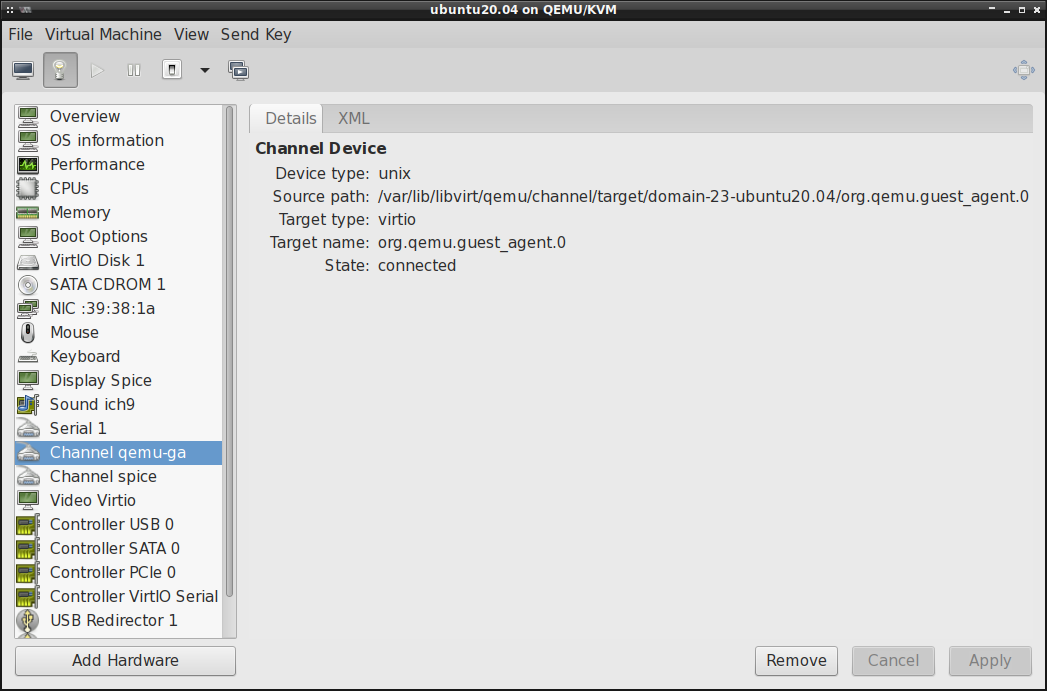

- #KVM REBOOT GUEST TIME ZONE CHANGES SERIAL#
- #KVM REBOOT GUEST TIME ZONE CHANGES MANUAL#
- #KVM REBOOT GUEST TIME ZONE CHANGES OFFLINE#
#KVM REBOOT GUEST TIME ZONE CHANGES OFFLINE#
Implement the following steps to automate fstab errors via offline ALAR approach: az vm repair create -verbose -g centos7 -n cent7 -repair-username rescue -repair-password 'password!234' -copy-disk-name repairdiskcopyĪz vm repair run -verbose -g centos7 -n cent7 -run-id linux-alar2 -parameters fstab -run-on-repairĪz vm repair restore -verbose -g centos7 -n cent7 The script-id for the automated recovery is: linux-alar2. The ALAR scripts use the repair extension run command and its -run-id option. ALAR covers automation of multiple repair scenarios including /etc/fstab issues. There are two ways to take an offline approach: Use Azure Linux Auto Repair (ALAR)Īzure Linux Auto Repair (ALAR) scripts is a part of VM repair extension described in Repair a Linux VM by using the Azure Virtual Machine repair commands.
#KVM REBOOT GUEST TIME ZONE CHANGES SERIAL#
If the VM serial console access is not available, an alternative solution is to repair the vm offline. You can also use "ctrl+x" command which would also reboot the vm. If the entries comment or fix was successful, the system should reach a bash prompt in the portal. Once, the syntax and entries are verified, reboot the vm using the below command. This will rerun the fstab configuration and notify the users of any existing syntax or entry errors. Use mount -a as a best practice after making changes to the fstab entries. The nofail option helps make sure that the VM starts even if the file system is corrupted or if it doesn't exist at startup. Use the nofail option in the filesystem entries (data disks) to enable startup to continue even after errors occur in partitions for the corresponding entries. Example of UUID entry in fstab file: UUID= /data xfs defaults,nofail 0 0 For more information about the syntax, run the man blkid command. Mount the data disks on Azure VMs by using the UUID of the file system partition.To determine the UUID of the file system, run the blkid command. We recommend that you comment fstab lines that you are unsure about instead of removing the lines. Commented lines can remain in the fstab file, but they won't be processed.

Lines that have a number sign (#) as the first character are comments. Few points to consider to correctly administer an fstab file are as follows:įields on each line are separated by tabs or spaces. It is a good practice to review each line to ensure that it is correct in both structure and content. To troubleshoot a boot failure, review the entry for the filesystem that failed to mount. For more information about the syntax of the fstab file, run the man fstab command. Each line in the fstab file indicates a filesystem that is mounted when the VM starts. Review the listed filesystems in /etc/fstab. Use your favorite text editor to open the fstab file. Once the vm has booted into single user mode. Follow single user mode documentation to access single user mode for each supported Linux partner images. The steps can vary based on the type of Linux OS in use and access to the root account.
#KVM REBOOT GUEST TIME ZONE CHANGES MANUAL#
Manual access to single user mode is required to reconfigure fstab.Connect to the serial console of the VM from Azure portal.Repair the VM Online Use the serial console Dependency failure for filesystem mount point will differ based on the names used. "/data" is an example of mount point used. Welcome to emergency mode! After logging in, type "journalctl -xb" to viewsystem logs, "systemctl reboot" to reboot, "systemctl default" to try again to boot into default mode. Dependency failed for Local File Systems. You see log entries that resemble the following example leading to the Emergency Mode state: Timed out waiting for device vice. Incorrect entry within fstab configuration.Ĭheck the current boot state of the VM in the serial log within the (/azure/virtual-machines/boot-diagnostics#boot-diagnostics-view) blade in the Azure portal.An entry exists for an unattached device without nofail option within fstab configuration.Traditional filesystem name is used instead of the Universally Unique Identifier (UUID) of the filesystem.This article discusses multiple conditions where a wrong fstab configuration can lead to boot issue and provides troubleshooting guidance.įew common reasons that can lead to Virtual Machine Boot issues due to fstab misconfiguration are listed below: The Linux filesystem table, fstab is a configuration table which is designed to configure rules where specific file systems are detected and mounted in an orderly manner during the system boot process.


 0 kommentar(er)
0 kommentar(er)
